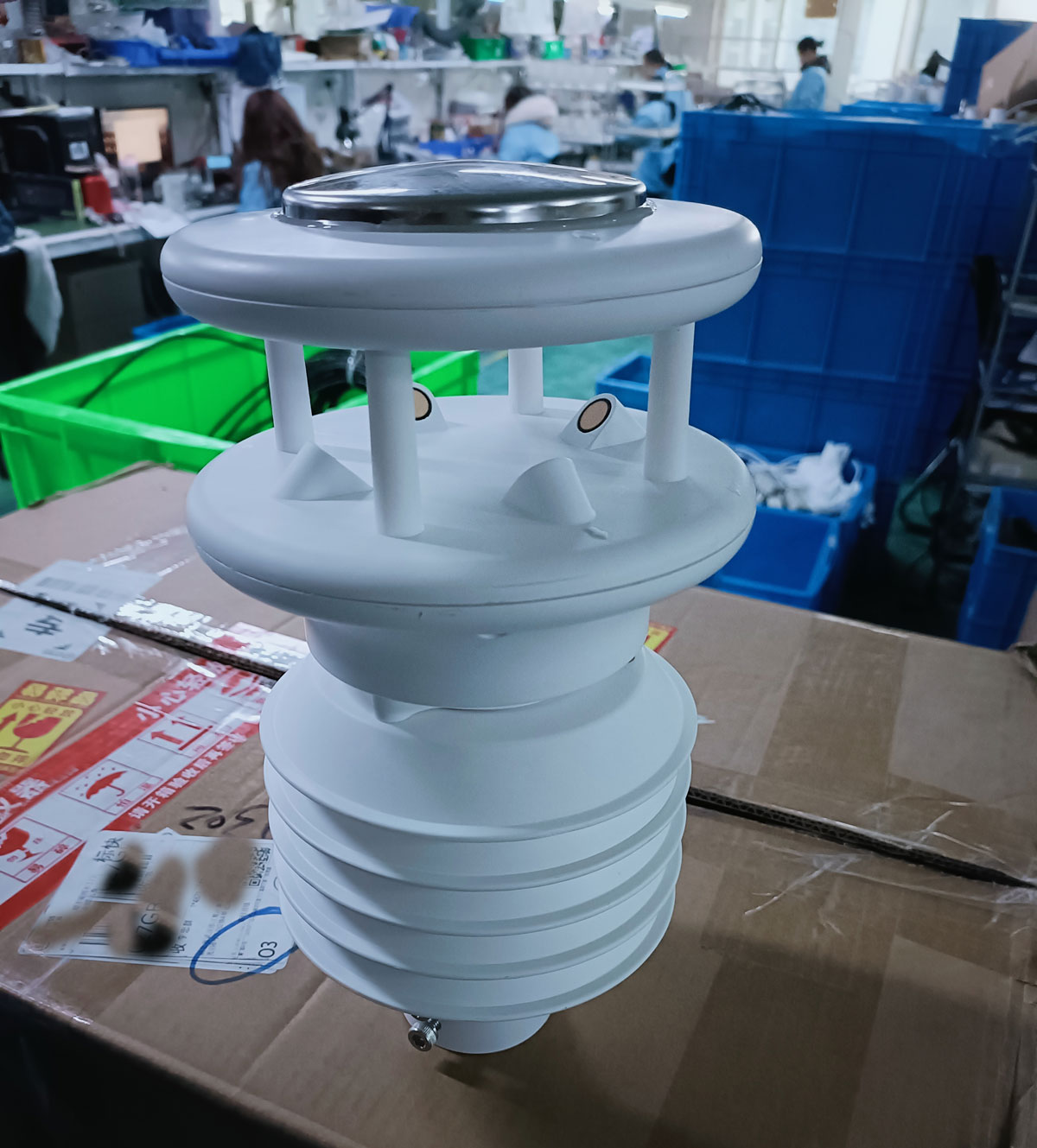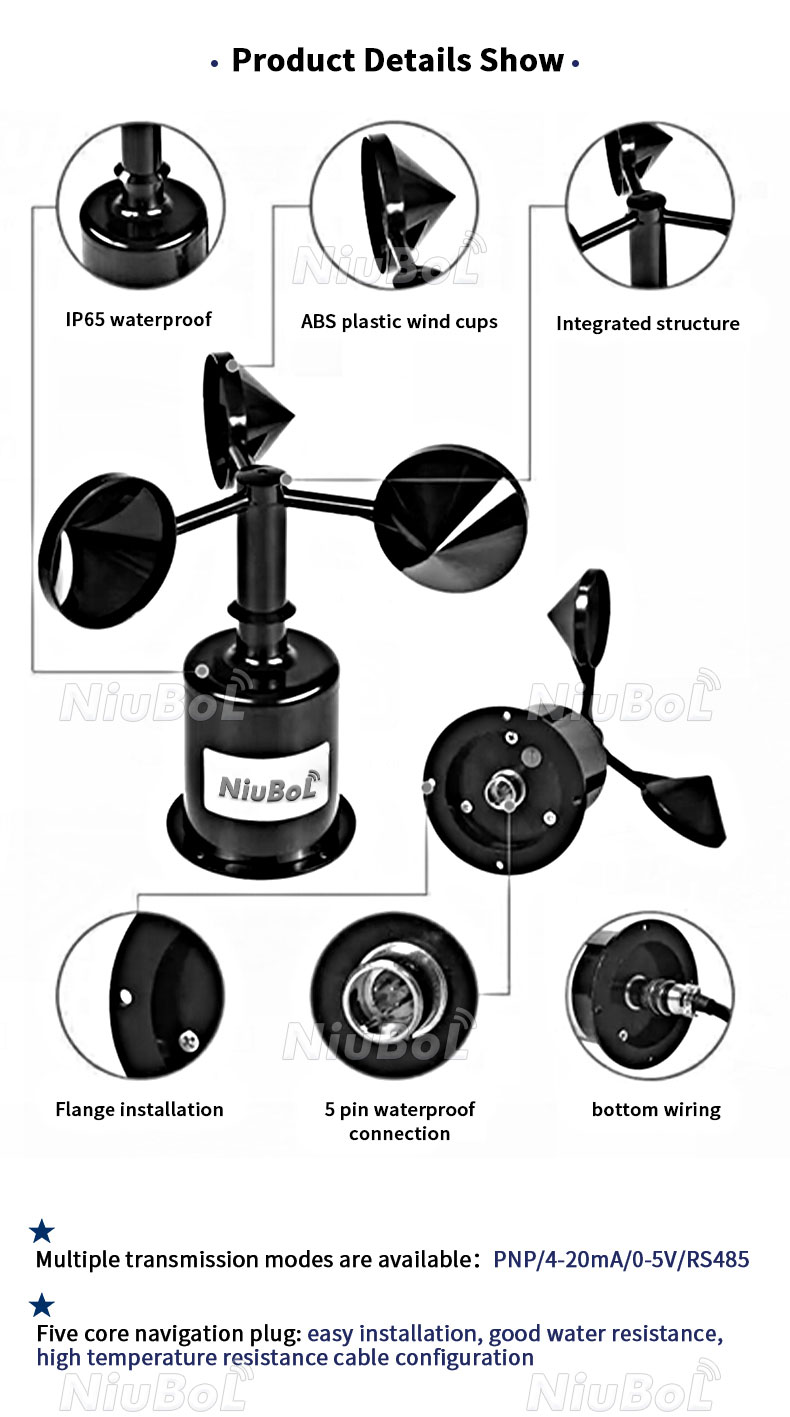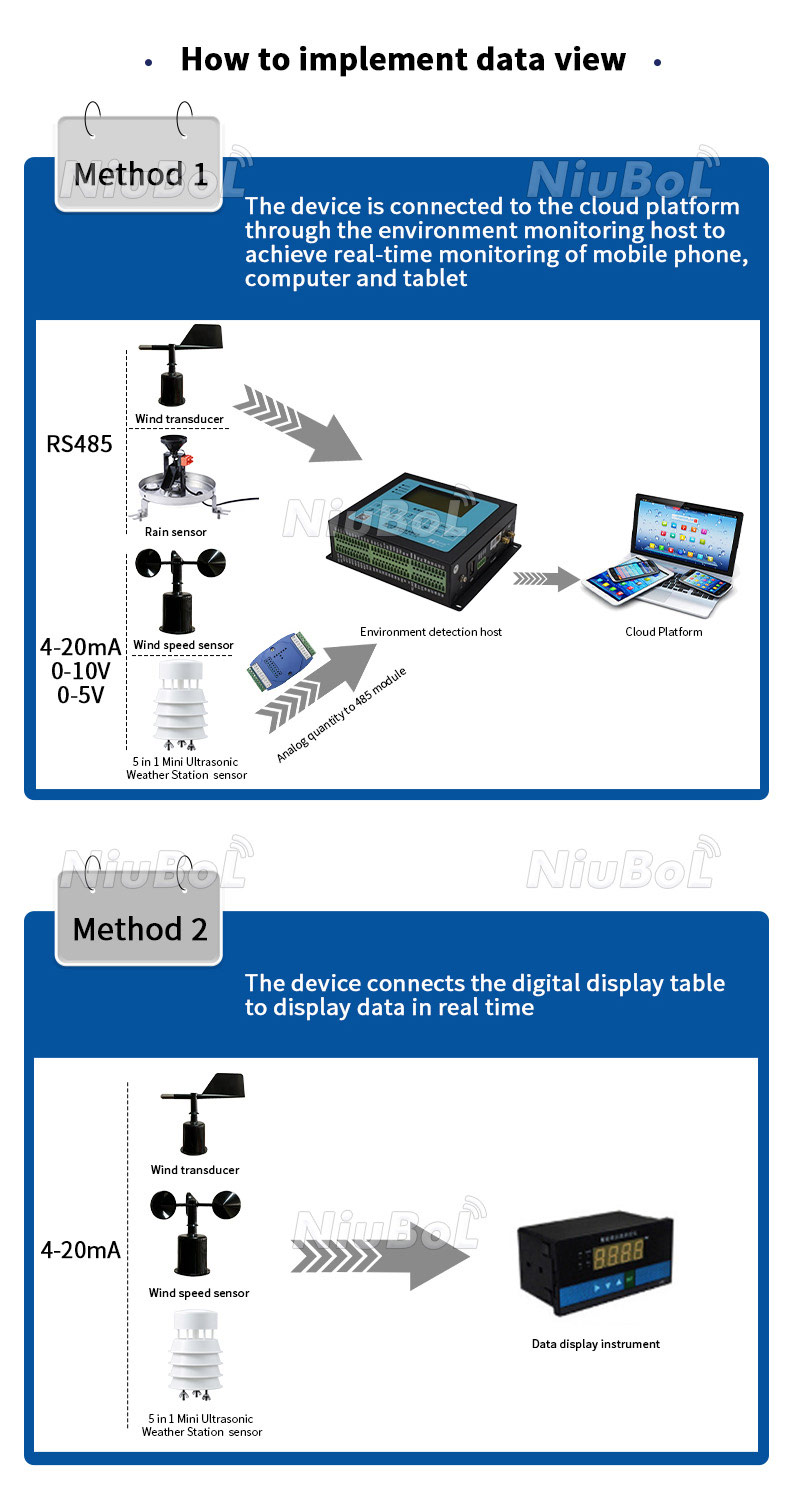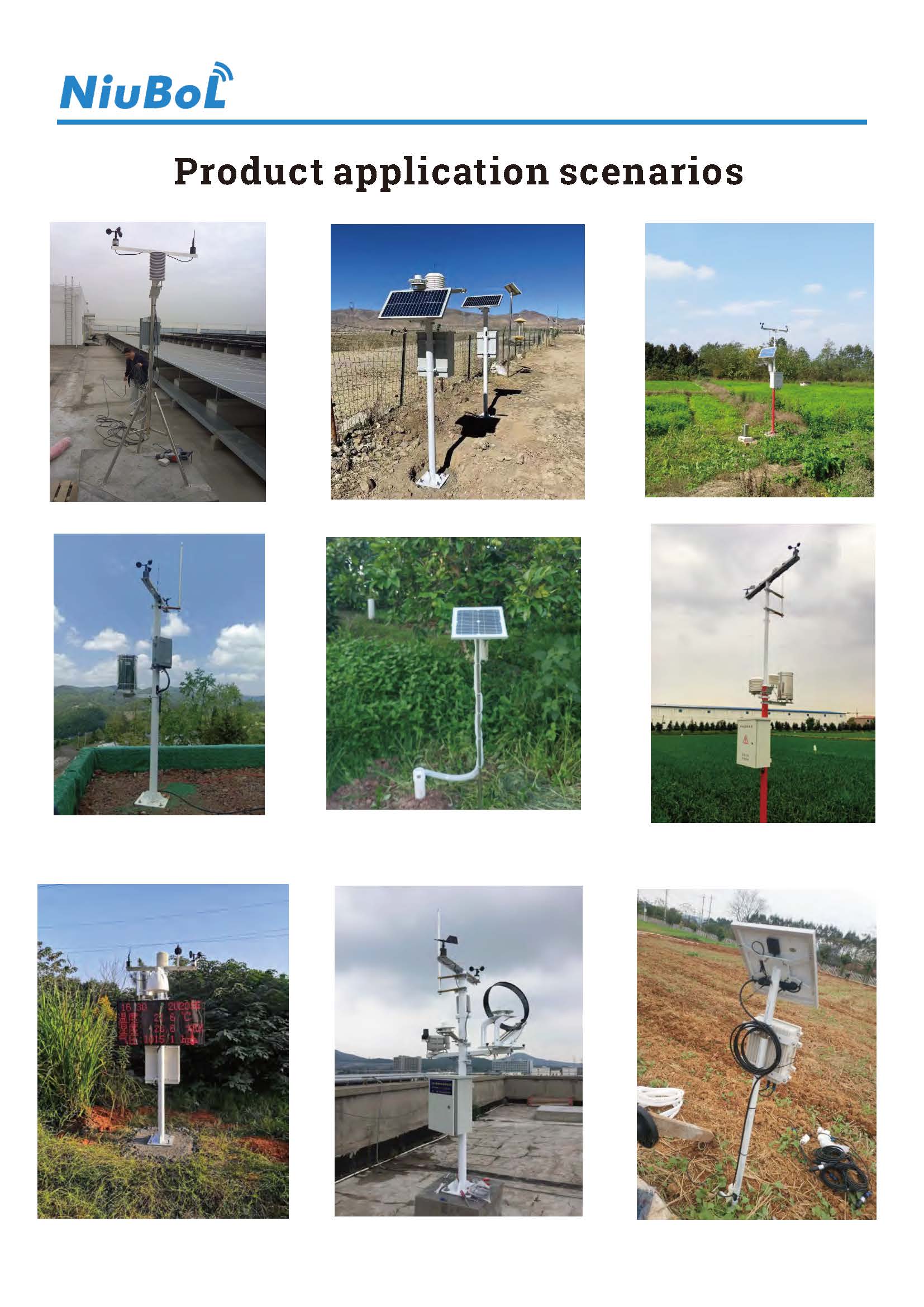

— Blogs —
—Products—
 Consumer hotline +8618073152920
Consumer hotline +8618073152920 WhatsApp:+8615367865107
Address:Room 102, District D, Houhu Industrial Park, Yuelu District, Changsha City, Hunan Province, China
Product knowledge
Time:2025-10-13 17:00:40 Popularity:557
In the fields of meteorology and environmental engineering, the anemometer is a key instrument used to measure wind speed and direction.
It transforms the originally intangible air flow into quantifiable data, helping us understand climate change, predict weather, and conduct energy analysis.
In modern automatic weather stations (AWS), anemometer data is widely used for:
- Weather forecasting and storm warnings
- Air pollution dispersion simulations
- Precision agriculture and spray control
- Wind energy resource assessment and wind farm site selection
Its accuracy and reliability directly impact the stable operation and safety decisions of these systems.
Definition:
The term "Anemometer" originates from the Greek words anemos (wind) and metron (measurement), meaning "a device for measuring wind." It can measure wind speed and direction and is one of the earliest meteorological measurement instruments.
The earliest anemometer was invented by Italian scholar Leon Battista Alberti in the 15th century. Since then, it has evolved through four-cup, propeller, to today's ultrasonic and laser anemometers. Each generation of technology has made wind measurement more precise and stable, especially with the introduction of ultrasonic technology, which has ushered in a new era of "frictionless, zero-maintenance" wind speed measurement.
Wind speed is typically expressed in meters per second (m/s), with some industries using kilometers per hour (km/h) or knots.
According to World Meteorological Organization (WMO) standards, anemometers should be installed in open areas 10 meters above the ground.
The core of the anemometer is to convert air flow into measurable signals.
Current mainstream technologies are divided into two categories: mechanical and ultrasonic.
Principle:
Wind force drives three hemispherical wind cups or a propeller to rotate, with the rotation speed proportional to the wind speed.
The rotation frequency is converted into an electrical signal via magnetic sensors or optical encoders, and then the instantaneous wind speed and average wind speed are calculated by a data logger.
Advantages:
- Low cost and simple structure
- Suitable for basic applications such as campus weather stations, agricultural projects, and scientific education
Disadvantages:
- Requires starting wind speed (cannot measure in light breezes)
- Lags in response to sudden wind changes
- Susceptible to mechanical wear, icing, and dust
Principle:
Ultrasonic anemometers use 2–3 pairs of ultrasonic transducers to transmit and receive sound waves to each other.
The system measures the time difference of sound wave propagation in the air along and against the wind, and calculates wind speed and direction through algorithms. The faster the wind speed, the more pronounced the time difference.
Core Advantages:
- No moving parts: No need for lubrication or maintenance, longer lifespan
- Extremely fast response: Time resolution up to 10–100 milliseconds
- High precision: Can simultaneously obtain horizontal, vertical wind speed, and direction
- All-weather adaptability: Unaffected by snow accumulation, dust, or salt spray
Therefore, ultrasonic anemometers have become the preferred solution for modern automatic weather stations, aviation meteorology, and wind energy research.

Mechanical Wind Vane:
A balanced vane indicates the wind's approach direction, and a potentiometer or magnetic encoder at the base converts the angle into an electrical signal.
Ultrasonic Array:
Three-dimensional vector calculation is performed through the time differences of sound wave propagation from multiple transducers, directly obtaining the wind direction angle.
High precision and fast response make it the mainstream solution for high-end monitoring systems.
High wind speeds can cause spray drift during pesticide application, and wind direction can determine safe spraying boundaries.
Real-time wind speed monitoring can effectively reduce pesticide waste and environmental pollution.
Wind farm site selection relies on long-term wind speed data.
Multi-height wind speed sensors can measure wind shear, guiding tower and blade design to improve power generation efficiency.
Wind speed and direction determine the dispersion paths of pollutants (such as PM2.5 and industrial exhaust).
It is an important input parameter for air quality models.

In a large-scale port construction project, the engineering team deployed the NiuBoL ultrasonic anemometer system.
During a strong wind event, traditional mechanical instruments showed measurement distortions due to excessive wind force, but the ultrasonic instrument still accurately provided instantaneous gust data. The project team was able to suspend high-altitude lifting operations 4 hours in advance, successfully avoiding equipment damage and safety risks.
[NiuBoL] specializes in providing ultrasonic anemometers that comply with WMO international standards.
Our products have the following advantages:
- High precision, strong stability, zero maintenance
- Support for RS485, Modbus, LoRaWAN communication protocols
- Seamless integration with weather stations, hydrological monitoring systems, and wind energy assessment equipment
Wind speed measurement—precision is the only standard. Upgrade your equipment and choose ultrasonic technology. Contact us to learn about the complete Anemometer series products and solutions.

A: Mechanical anemometers' moving parts may ice up in low temperatures or get stuck by dust. Ultrasonic anemometers have no mechanical parts, so they are unaffected by these factors and offer higher corrosion resistance and temperature tolerance.
A: The WMO recommends installation 10 meters above the ground (in open areas). In agricultural scenarios, the height can be adjusted based on crop canopy height; for example, installation at about 3 meters in orchards to obtain data closer to the crop environment.
A: Mechanical types are recommended to be cleaned or inspected every 6–12 months; ultrasonic anemometers typically require no calibration, only periodic checks to ensure bracket stability and normal interfaces.

The anemometer is not just a tool for measuring wind—it's the decision-making core for safety, energy, and sustainable development. From agriculture to wind energy, from environmental monitoring to research, choosing the right anemometer is an investment in precision, safety, and efficiency.
NBL-W-21GUWS-Ultrasonic-Wind-speed-and-direction-Sensor.pdf
Related recommendations
Sensors & Weather Stations Catalog
Agriculture Sensors and Weather Stations Catalog-NiuBoL.pdf
Weather Stations Catalog-NiuBoL.pdf
Related products
 Combined air temperature and relative humidity sensor
Combined air temperature and relative humidity sensor Soil Moisture Temperature sensor for irrigation
Soil Moisture Temperature sensor for irrigation Soil pH sensor RS485 soil Testing instrument soil ph meter for agriculture
Soil pH sensor RS485 soil Testing instrument soil ph meter for agriculture Wind Speed sensor Output Modbus/RS485/Analog/0-5V/4-20mA
Wind Speed sensor Output Modbus/RS485/Analog/0-5V/4-20mA Tipping bucket rain gauge for weather monitoring auto rainfall sensor RS485/Outdoor/stainless steel
Tipping bucket rain gauge for weather monitoring auto rainfall sensor RS485/Outdoor/stainless steel Pyranometer Solar Radiation Sensor 4-20mA/RS485
Pyranometer Solar Radiation Sensor 4-20mA/RS485
Screenshot, WhatsApp to identify the QR code
WhatsApp number:+8615367865107
(Click on WhatsApp to copy and add friends)
